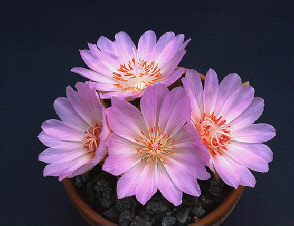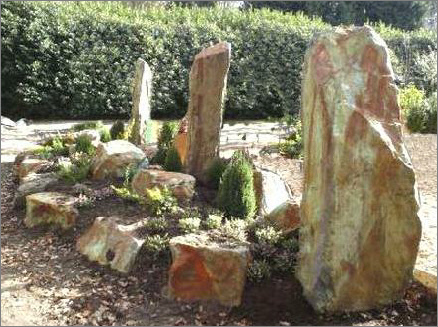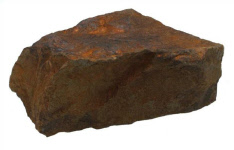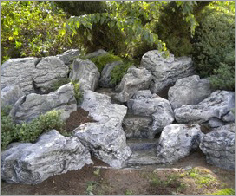
Copyright © 1982-
Rockerystones.com is owned by Wheatley Rent A Plant, 26 Copthorn Avenue, Park Lane,
Broxbourne, Hertfordshire EN10 7RA. Terms and conditions and privacy policy.

Lewisia rediviva is, according to Wisley’s Alpine log, one of the thirteen species of deciduous types of Lewisia. Of the remaining thirteen, nevadensis, pygmaea, congdonii and oppositifolia are grown at Wisley with the others (disepala, kellogii, maguirei and triphylla) being very rare in cultivation and triphylla very difficult to grow.
The rock garden, rockery or alpine garden became very popular in the Victorian era with botanists returning from epic journeys with new species of flora. Its popularity is possibly explained by the need to recreate a small part of the wilderness in our own home especially with the addition of ponds and trickling water.
The rock garden can be as small as the rock effect patio planters below or as large as several acres.

Elmdene rockery planters

Alpine
beauty

How could anyone resist such a headline when they learn that all the rocks in the image above are indeed hollow and man made. Mock rock? bogus boulders? Whatever you want to call them a collection of replica rocks and stone like the one above just has to be called a mockery! Faux stone is ideal for patios and green roofs where access and weight is a major consideration.
Originally made for use in films, the lightweight artificial rocks have also found a home with nurserymen who want to display their shrubs at exhibitions in a convincing environment. They can even be adapted for home use as a trickle water feature. Now available for hire.

Rock and stone
on eBay
You can buy almost anything on eBay including rocks for your rockery. A recent search on ebay revealed a whole rockeries’ worth of limestone with a starting bid of 99p. If nobody else placed a bid, it could all be yours for next to nothing. Buyer collects! You can buy alpine plants there too.

Making a hollow mockery
The three main types of rock:
Igneous
Sedimentary
Metamorphic
Igneous rocks are formed from molten rock called magma. They are mostly crystalline (made up of interlocking crystals) and usually very hard to break. Familiar igneous rocks include basalt, pumice and granite. More exotic sounding igneous rocks can be found here. The geological Society’s website has a selection of images and uses of igneous rock.
Sedimentary rocks are formed from sediment grains deposited by water, wind or ice. They are always formed in layers, called “beds” or “strata”, and quite often contain fossils. Sandstone, mudstone and limestone fall into this group. Additional sedimentary rocks can be found on this page. The geological Society’s website has a selection of images and uses of sedimentary rock.
Metamorphic rocks were once igneous or sedimentary rocks, but have been changed (metamorphosed) as a result of intense heat and/or pressure within the Earth’s crust. They are crystalline and often have a “squashed” (foliated or banded) texture. Slate and marble fall in to this group and so do these. The geological Society’s website has a selection of images and uses of metamorphic rock.


Impact
absorbing
stone
The title is slightly misleading when read with the picture above. The impact absorbing part of the image isn’t the large climbing rock but refers to the pebbles at the base. CED's Gravelsafe® is the latest innovation in impact absorbing safety surfacing. Unlike typical pea gravels Gravelsafe ® is a well rounded multicoloured granite pebble that has no broken or sharp elements. The natural roundness of this product works almost like a liquid when faced with the impact of an object. The pebbles roll against each other thus creating exceptional impact absorbing properties in situations where children jump or fall from climbable play equipment.


Above and right: cobble filled mesh planters. Expensive! Other stone plant containers and containers in other materials can be seen at
Japanese rock gardens or Zen gardens utilise rock and stone surrounded by moss to represent land and pebbles to represent water. These gardens are often adapted to include real water and koi carp. You can hire artificial rocks and pebbles to temporarily create a Zen garden in your home, workspace or garden.
Note that Cobble is a generic geological term for any stone having dimensions between 60 and 250 mm. "Cobblestone" is derived from the very old English word "cob", which had a wide range of meanings, one of which was "rounded lump" with overtones of large size. It was these smooth "cobbles", gathered from stream beds, that paved the first "cobblestone" streets. The square shaped stones used as a surface for roads and paving are actually known as “setts”.

More lightweight rockery stone:
Westmorland stone, water-
Carboniferous limestone is made up of the shells of millions of sea creatures encased in carbonate mud and is generally grey. Acidic water running through the cracks on the rock causes the interesting features known as clints, grykes, runnels, pits and pans. Right: artificial Westmorland stone.




